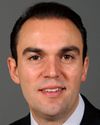That's a fair observation. The prohibition regulations that I was referring to generally constitute a comprehensive ban. So when I said that we've looked at substances and determined whether to add them to the virtual elimination list and decided not to because they were already subject to the prohibition regulations, those prohibition regulations don't, for example, ban the presence of a substance in one type of product and not in another product. They're fairly comprehensive bans.
That's not the case, as you point out, for some substances like lead or mercury or other substances that have been discussed before the committee. I'm not at all trying to present the case that we have adequately addressed all substances that you might think should be candidates for virtual elimination or banning. Again, I think that's a policy judgment that I don't want to make. I just want to make sure the committee understands that in some cases, the government may have taken a step that does comprehensively address the presence of that substance in the environment and that following the additional steps prescribed by the act for virtual elimination would not, in our view, have had any environmental or health benefit.



